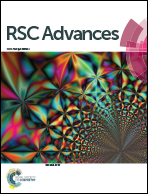Solar-blind photodetector based on Ga2O3 nanowires array film growth from inserted Al2O3 ultrathin interlayers for improving responsivity
Abstract
Due to the confinement of scale and dimension, the photon–electron interactions in nanostructures can be effectively manipulated for excellent photoelectric properties of materials and devices. β-Ga2O3 with a direct bandgap of ∼4.9 eV has a great potential in solar-blind ultraviolet detection. Photodetectors based on nanostructures of β-Ga2O3 material usually show a high photoelectric performance. However, low device fabrication repeatability and low effective utilization of light hinder the practical application of the photodetectors. In this work, we propose a preparation method to obtain a Ga2O3 nanowires film which combines the benefits of nanowires and thin films by alternative depositing of Ga2O3 and Al2O3 ultrathin layers. The vertical nanowire structured films are formed at low temperature with an appropriate stress relaxation. Then prototype photodetectors of a metal–semiconductor–metal structure are fabricated using the as-grown films. The nanowire films-based photodetectors exhibit higher responsivities than the smooth film-based photodetector, which is attributed to their larger surface-to-volume ratio and stronger light scattering effects on the nanostructured film surface. Besides, the excellent stability and tolerable response time of Ga2O3/Al2O3 nanowires based photodetectors indicate that the photodetectors can be developed for the future applications in solar-blind ultraviolet communication.


 Please wait while we load your content...
Please wait while we load your content...